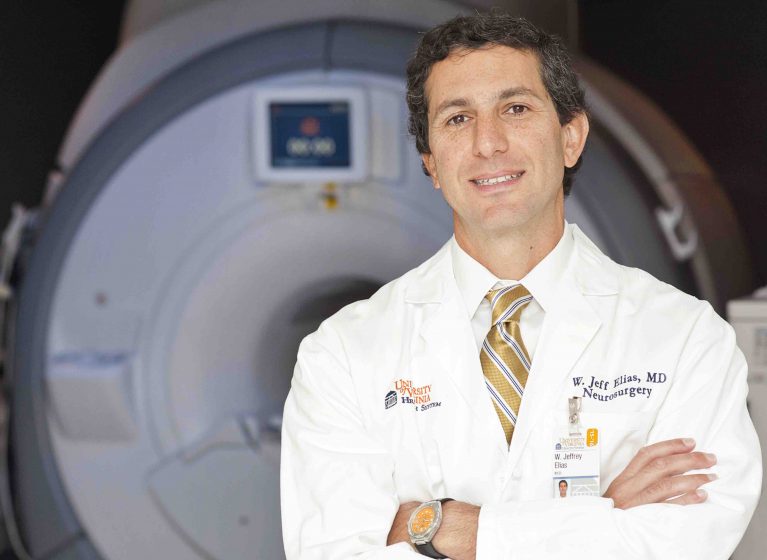A new study from our Jeff Elias, MD, suggests that focused ultrasound -- a technology I've told you much about -- has the potential to benefit patients with Parkinson's symptoms that are more severe on one side of the body.
Focused ultrasound focuses sound waves much like a magnifying glass can focus light. Directing these focused sound waves inside the brain allows doctors to interrupt faulty brain circuits or destroy targeted cells -- and without the need for cutting into the skull.
In this case, Dr. Elias and our Dr. Binit Shah and their collaborators targeted the subthalamic nucleus, a part of the basal ganglia system that helps suppress unwanted movements.
“This small brain region, the subthalamic nucleus, had a very strong and potent effect on Parkinsonian symptoms when we targeted it with precise, focused ultrasound energy,” Dr. Elias told me. “The key for the ultimate adoption of this new procedure will be further refinements of the technology to ensure reliability and safety.”
For this latest study of focused ultrasound, Dr. Elias and Dr. Shah collaborated with Spain’s Centro Intregral de Neurociencias to evaluate the approach in 40 volunteers. Twenty-seven received focused ultrasound, while 13 received a simulated treatment.
The volunteers’ symptoms before and after were assessed on a scale of 1 to 44. Those who received focused ultrasound saw an improvement of 10 points, while those who received the sham treatment saw a difference of less than two points.
Side effects reported included unwanted movements, speech disturbances, difficulty walking and muscle weakness. In most cases, these were temporary, but some effects persisted in six participants a year later.
Based on the results, the researchers concluded that larger studies are warranted.
“Parkinson’s disease affects patients in more ways than just tremor,” Dr. Shah said. “The current FDA approval for focused ultrasound in Parkinson’s disease treats only tremor. Targeting this new area allows us to improve tremor but also get more overall benefit for our patients than we previously were able to achieve.”
